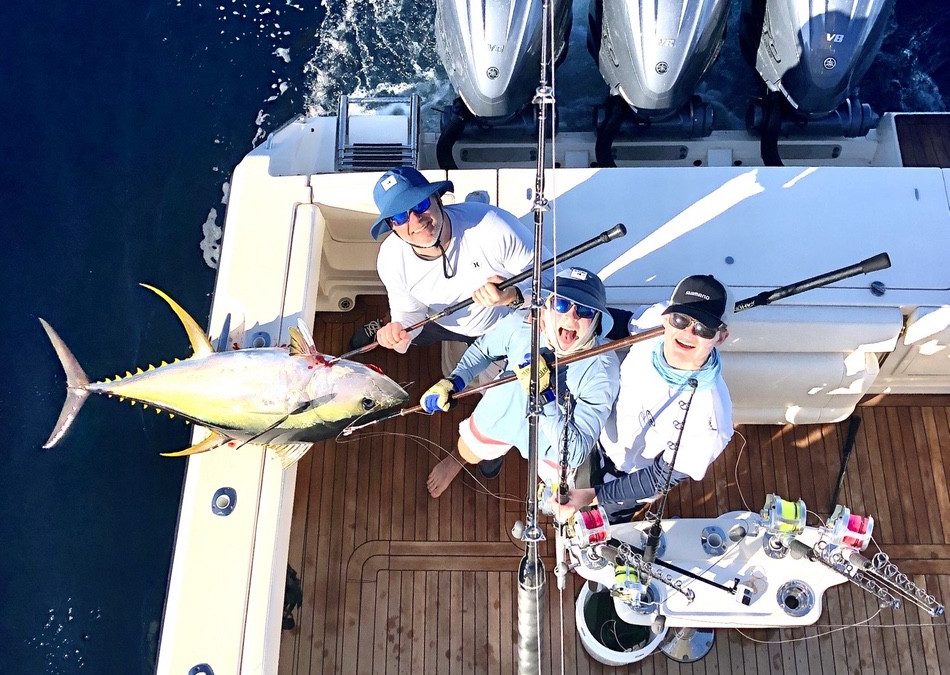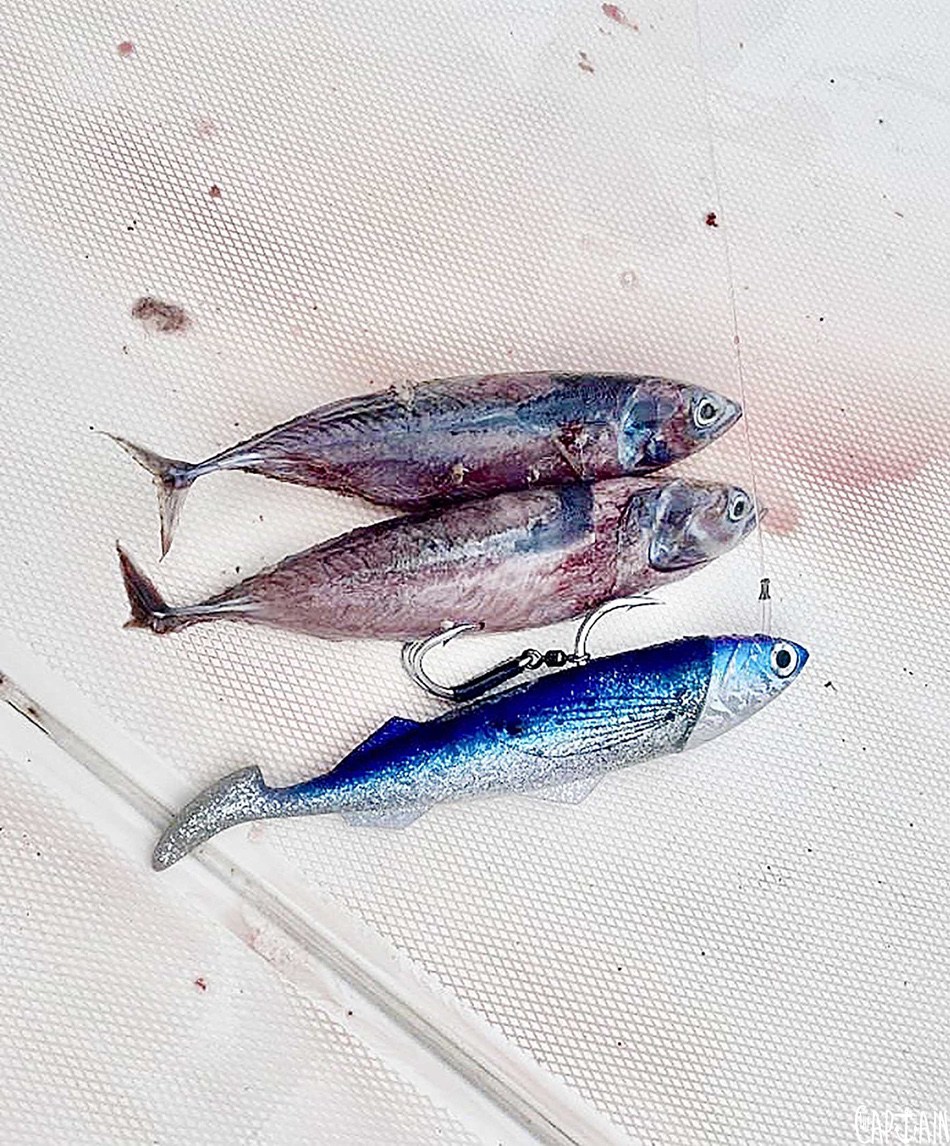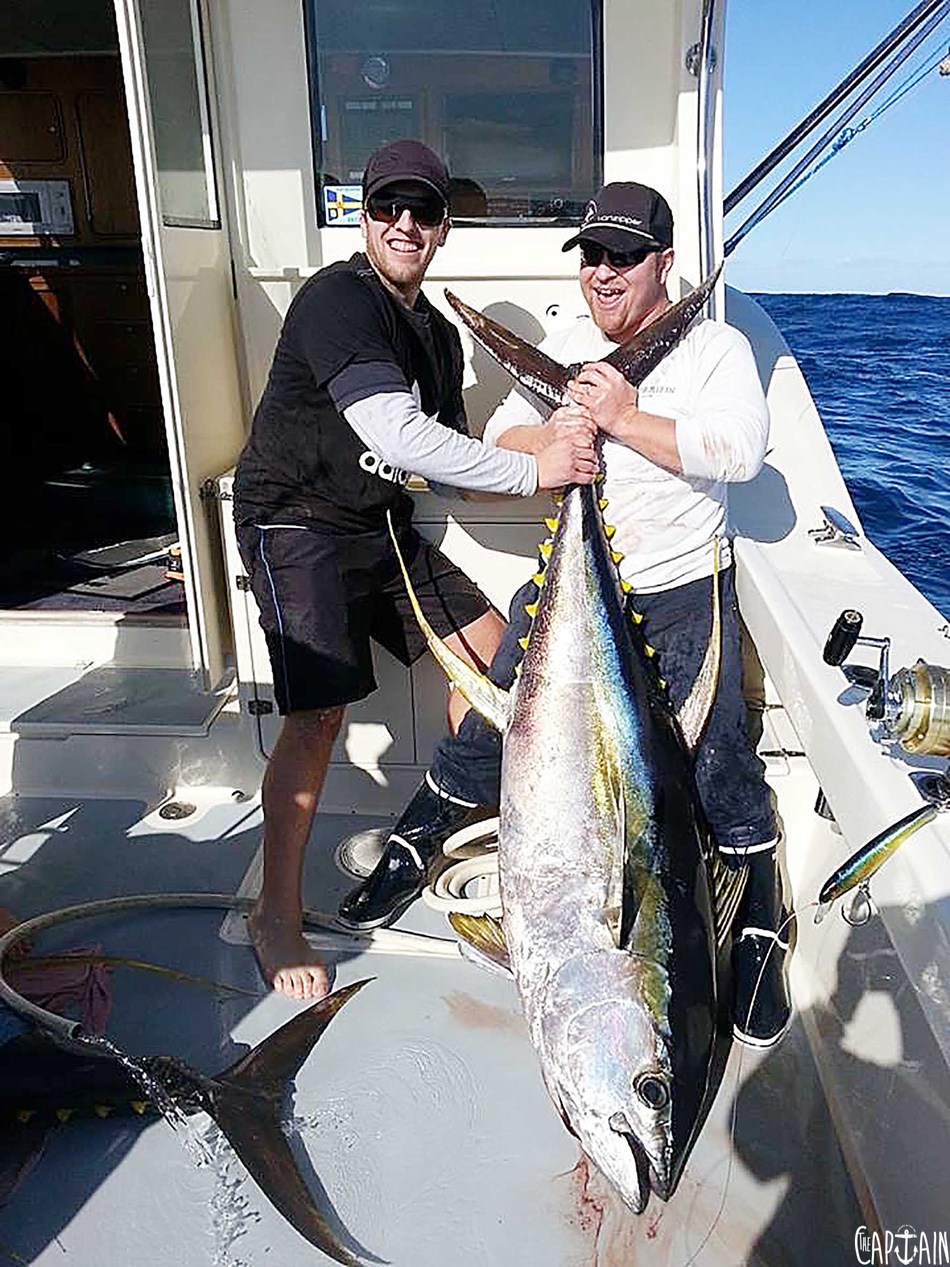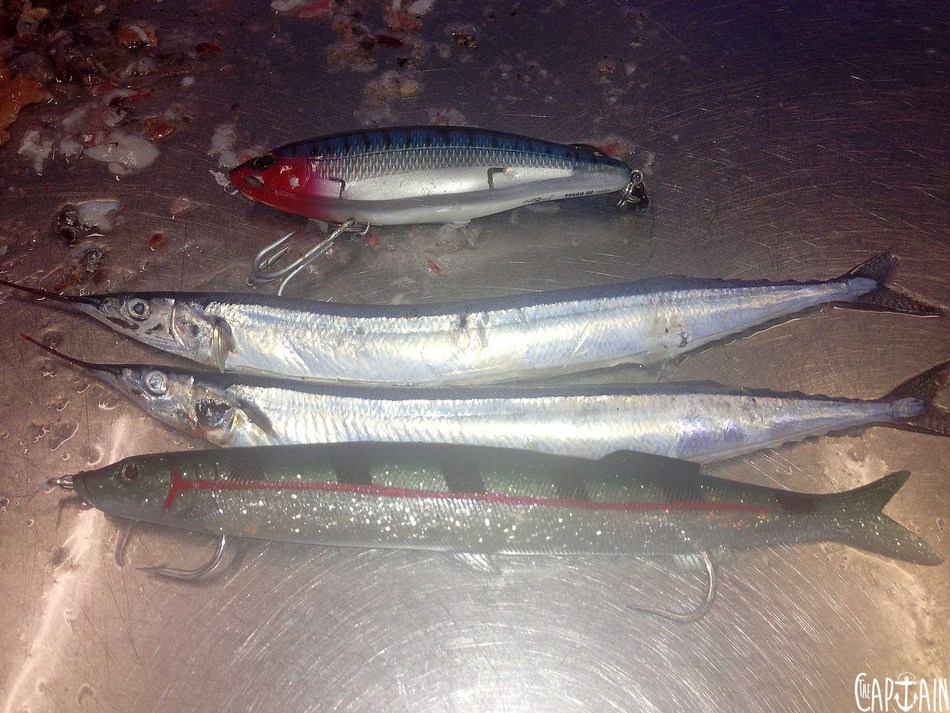One of the most interesting things I find when talking to game fishermen after a day on the ocean is how some crews are ultra-observant compared to others trolling the same stretch of water. Good crews always note the type and size of bait they encounter, as well as the current. Average crews usually only notice when the esky runs dry.
“Matching the hatch” is a trout fishing term. It means selecting the style of fly that most closely resembles the bug the trout is feeding on — at the right stage of its buggy life. Luckily — or unluckily, depending on which way you look at it — for the trout fisherman standing up to his nuts in the freezing water of a snakeinfested river, they can clearly see the trout refusing their offering. So the fisho is able to select a different-looking fly pattern that might encourage a strike. This happens with fish and angler pretty much stationary. Compare that to the average game-fishing lure trolling scenario, where it’s unlikely you’ll see your target refuse the offering as all the action is going on below your prop wash. Nor will he wait for you to change lures so you can try a second option. What normally happens is you troll a mixed spread to cover your bases. Tuning that spread over the course of a day means every lure is working at being the best representation of the bait in the area — and on some occasions will produce a strike when other crews miss out. You might only get one opportunity in a day on the ocean. The difference between coming home a hero or a zero could be how observant you were during the day and how that affected your lure pattern.
We normally start the morning with a spread of our favourite lures — ones that have produced the goods in the past. But once underway trolling in your chosen fishing area, you should scour the ocean for signs of life and question whether your current pattern is doing a good job matching the hatch. Identifying birds in the area is the first giveaway. If the area is loaded with gannets, it’s unlikely the bait will be over eight inches long as these birds can’t feed on larger fish. So lures resembling smaller slimies or sauris will be a better option. If there are lots of mutton birds, it’s a good bet the bait is less than three inches long — but this could be getting pushed to the surface by smaller tuna, so you want to cover both bases until by catch begins to be a problem.
One of the biggest mistakes in not matching the hatch correctly is not identifying the bait you’re marking on your sounder. If you’re marking bait on your sounder down midwater, even if you only intend to lure fish for the day, it’s best to drop a jig down and catch it to make sure your current spread is matching it as best it can. A modern, welltuned CHIRP sounder has an amazing amount of definition. With time on the water, you’ll notice how different sizes of different species mark. But until you and your sounder have that level of understanding, it’s best to try to catch it to see how big they are. There’s no point pulling around lures that look like 12-inch slimies if all the bait fish are five inches long. What I’ve described should be damn obvious, but it’s having the nous to change quickly that’s proven the difference for me — especially with yellowfin tuna. This season, by far the biggest tuna we’ve come across were feeding on whitebait less than an inch long. On other trips, we’ve encountered three or four different species of ocean gar, or sauris, from three to 12 inches long. Couple that with a mix of frigate and striped tuna. Every day, we had to change our spread quickly to get a strike while the fish were up feeding.
ROD’S SIX QUICK TIPS
01 Have your selection of lures to begin the day cover the bait species you expect to encounter. Usually, an average of nine-inch suits most slimies and ocean gar. However, have a spread of three to five-inch and 12-inch plus lure ready to deploy.
02 Talk to crews that have fished the area a few days before and ask what they saw so you can tune your spread before you leave the wharf. If you’re not a member of your local game fishing club, join one. Nothing accelerates your learning curve quicker than surrounding yourself with consistent crews. Social media can be the biggest bum steer.
03 The birds in the area are normally the biggest giveaway, so pay close attention to what they’re feeding on.
04 If you find tuna feeding on approach, find out what they’re feeding on and the size of the bait. If you can’t see any bait fleeing, it might mean the tuna are feeding on micro bait, so downsize your gear before you reach the fish.
05 This is not just geared towards tuna. Marlin switch bait species and can be just as picky at times. Striped marlin often feed in the same area on the same bait as striped tuna. How often do small striped tuna lures get eaten by marlin in a spread of larger lures? All the time.
06 When changing your spread, do it one at a time once you have the replacement out and ready. There’s no point pulling in half your gear, especially during bite time.





Recent Comments